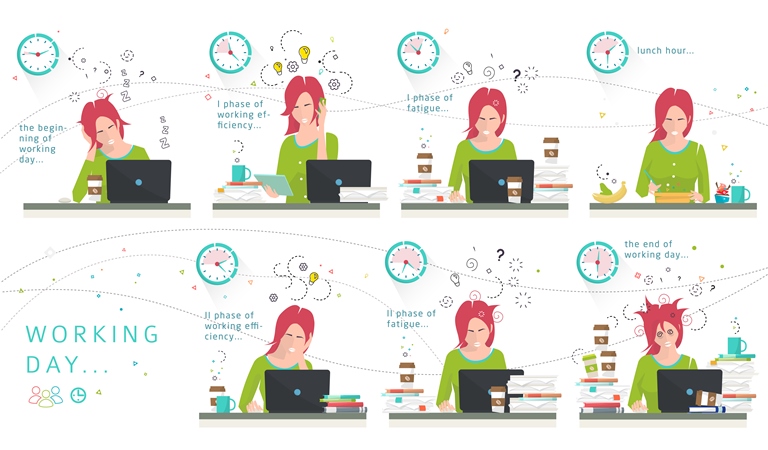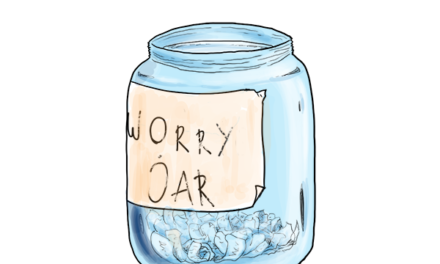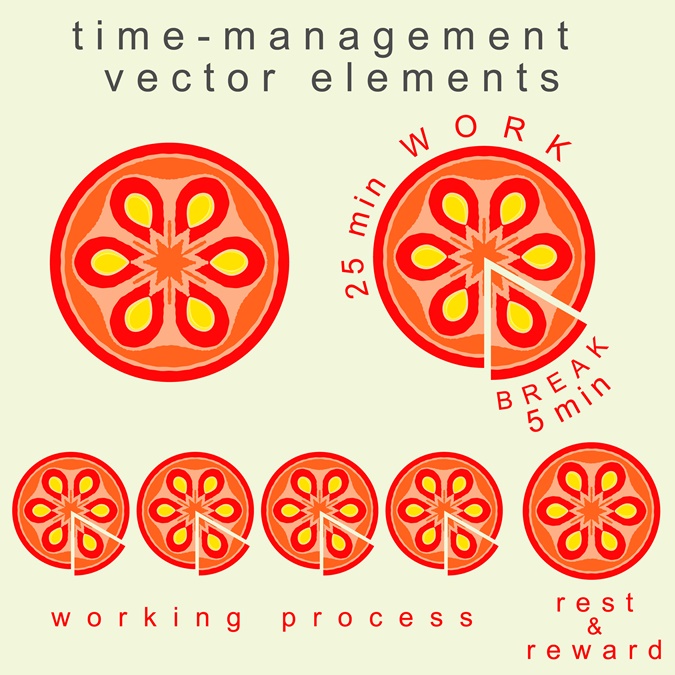Work for 45 Minutes, Rest for 15
Discover Your Work-Play RatioIf this model worked for children could it also work for adults? This question has been answered by Tom Rath in his book Are You Fully Charged? The short answer to this question is yes, it works. The long answer: in his book, Rath has sighted the work of a software development company called Desk Time. Desk Time tracks employees’ time use throughout the day. When Desk Time studied the most productive 10 percent from a sample size of 36000 employees, they all had a thread in common. They took regular breaks! (I once read about a multinational bank installing motion sensors under employee desks to determine the time they were spending away from their desks’ workplace sensors. Autonomy, not spying, determines creativity and productivity in a workplace.)
Desk Time research indicated that a 52/17 model was practiced by the most productive workers. For 52 minutes of concentrated effort, productive employees allowed themselves a 17 minute break. During their free time they did not check emails or Facebook updates, instead they took a walk.
I once heard Steve Kotler talk about flow cycles. Steve stated that ‘flow is a four-part cycle: struggle, release, a flow state and recovery.’
During release is when we get our mind off a problem or task. This is when we take breaks. One thing that you can’t do during the release state is watch television. This is because it changes your brain waves and blocks flow. When considering what to do during breaks, be mindful of choices that you make to release and feel reenergised.
During your break consider taking a walk, a power nap, making a cup of tea, stretching, talking to someone (who is typically not an energy leech). In the beginning this might take effort but in the long term you will develop effective release mechanisms.
Whether you are working or you are a student we encourage you to find your ideal ratio with work and play. For me the 45/15 model works brilliantly.
Another point to remember is that during work time, do your work with intense focus. Multitasking and having your fingers in several pies will only leave you flustered in the end. Instead of recharging during your break, you will lament about how unproductive your worktime was.
You should clearly articulate what you would like to achieve during your work time (we recommend writing it down in your wellness journal or notebook). If you enter an activity before considering the end goal and you multitask, it’s going to be just like when you drive all the way to the store, get out of the car, and then can’t remember what you came for. Sound familiar? To me it does. Therefore before embarking on a task, clearly decide what you want to achieve and begin with singletasking. Use singletasking tools identified in our blog post to minimise distractions and stay on course.
According to Tom Rath, working with purpose is important for our health and well-being. It’s our WHY for waking up each day and doing what we do. Even when things are not going well, having your WHY in sight will serve as second wind and get you past the finish line. If you have forgotten your WHY, take some time to go back to the drawing board and rediscover what the task or activity means to you. When we feel lost and purposeless, it is time for us to change course or reconnect with our purpose to feel happier, engaged and productive.
According to Rath, working with purpose prevents brain plaque and sharpens your mental acuity. Plaques and tangles in your brain are a sign of onset of Alzheimer’s disease. A research at Rush University Medical Centre indicates that having a purpose in life protects the brain against these plaques and tangles. Living a life of purpose assists in cognitive health in old age. Our life is an accumulation of days and minutes. Small daily habits of establishing purpose, focusing, engaging and energizing are building blocks for our well-being.
Establish your purpose for doing a task, use singletasking to minimise distractions, and work out your work and play model. If you are new to this start small — your brain will thank you in the end.
Pomodoro is a time management technique that you can use to manage your work and play ratio. Pomodoro literally means tomato pasta sauce, YUM!
The Pomodoro technique uses a timer to break down tasks into intervals of work and rest. You can download the Pomodoro app on your computer or laptop.
Journaling tip
Time to bring out your wellness journal and answer the following questions
- How can I structure my day so I can work in spurts and be more effective?
- What is my work and play ratio? For how long can I maintain concentration and be productive? (Identify what works for you. If you are a beginner try the 45/15 model and adjust it later to your liking. In the beginning try applying this strategy to the first half of your day and then gradually expand.)
- During my work sprint what is my purpose or end goal? (Be clear about what you would like to achieve – read a chapter, finish writing the assignment structure, write a code, etc.)
- How do I achieve freedom from structured work? What activities would I like to do when taking a break?
- How can I help remind my friends and/or colleagues about the importance of their work?
- Is there a field trip you and your team can take to see the influence of your work more directly?
Ps: Share with us your work and play ratio, and tell us which activities help you recharge during breaks.
Words To Grow By
Tom Rath
“Work in bursts, take frequent breaks, and keep the mission in mind.”





